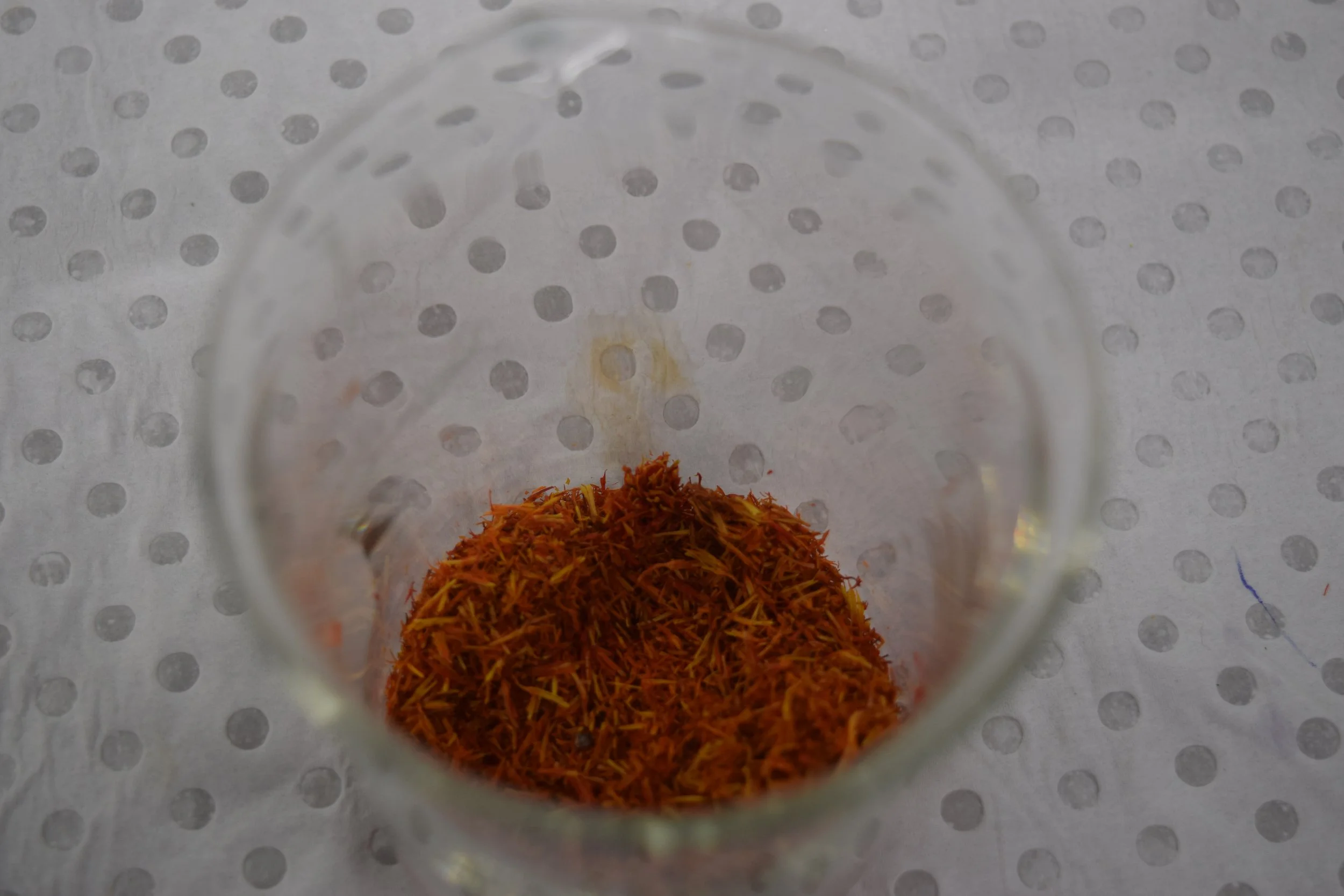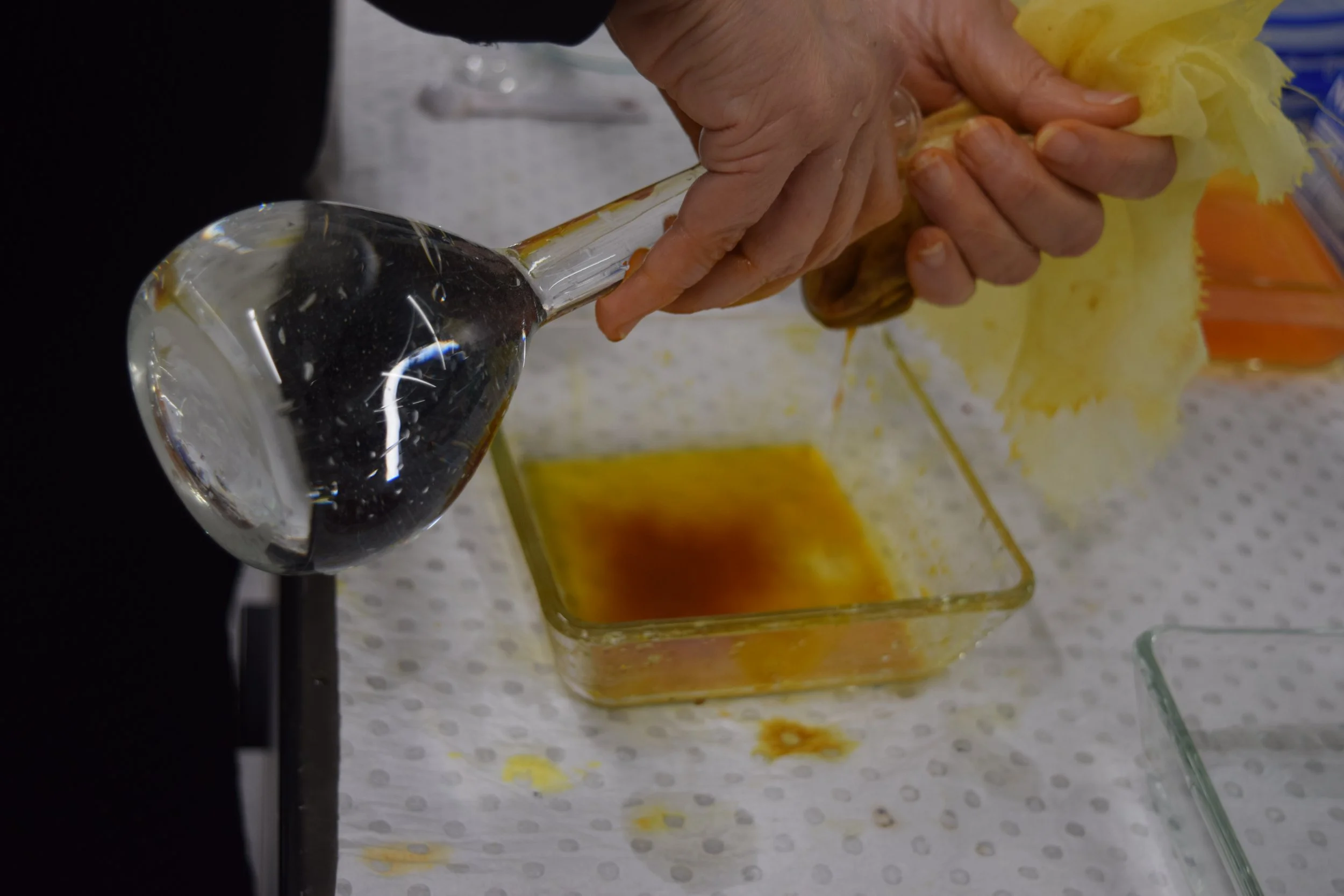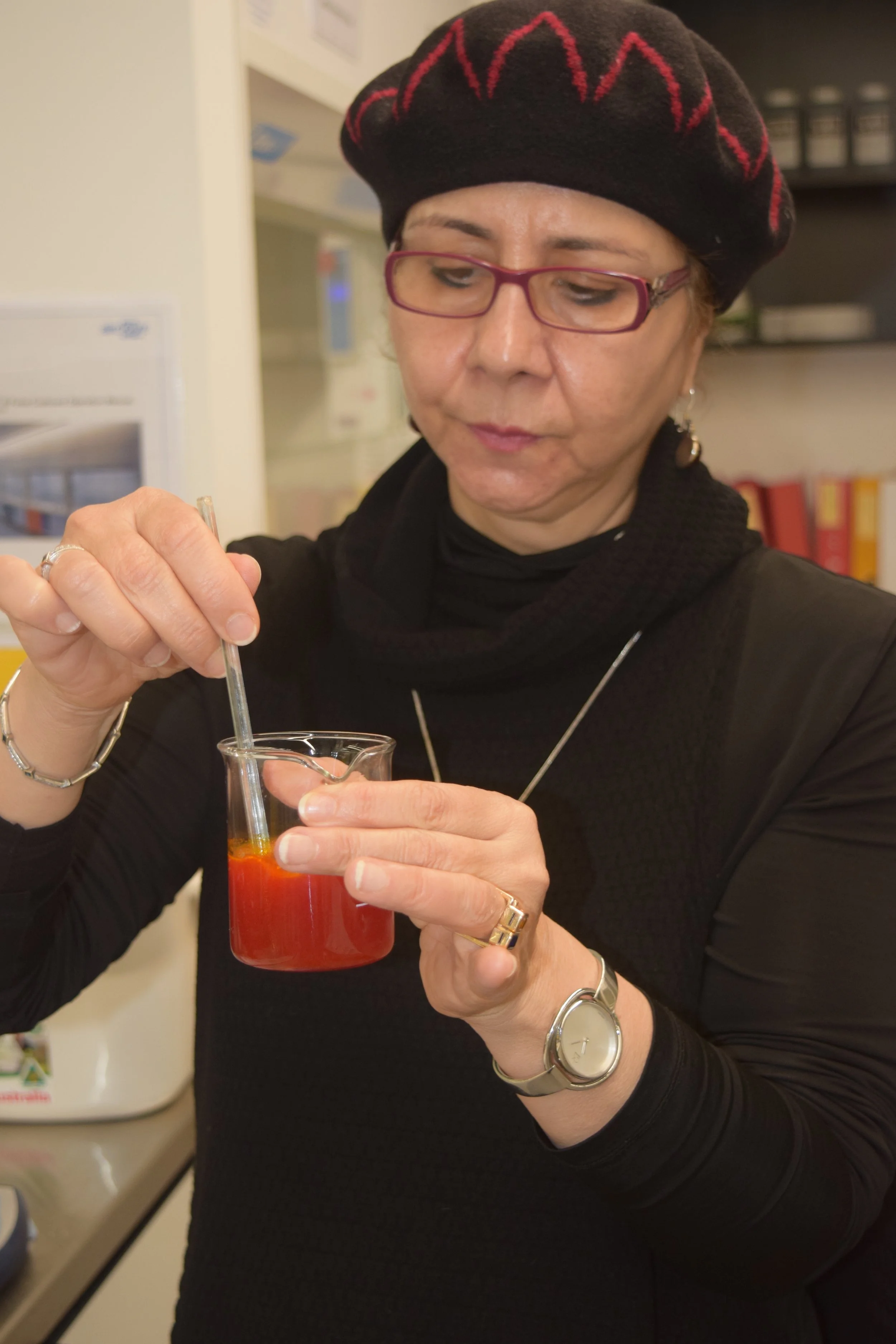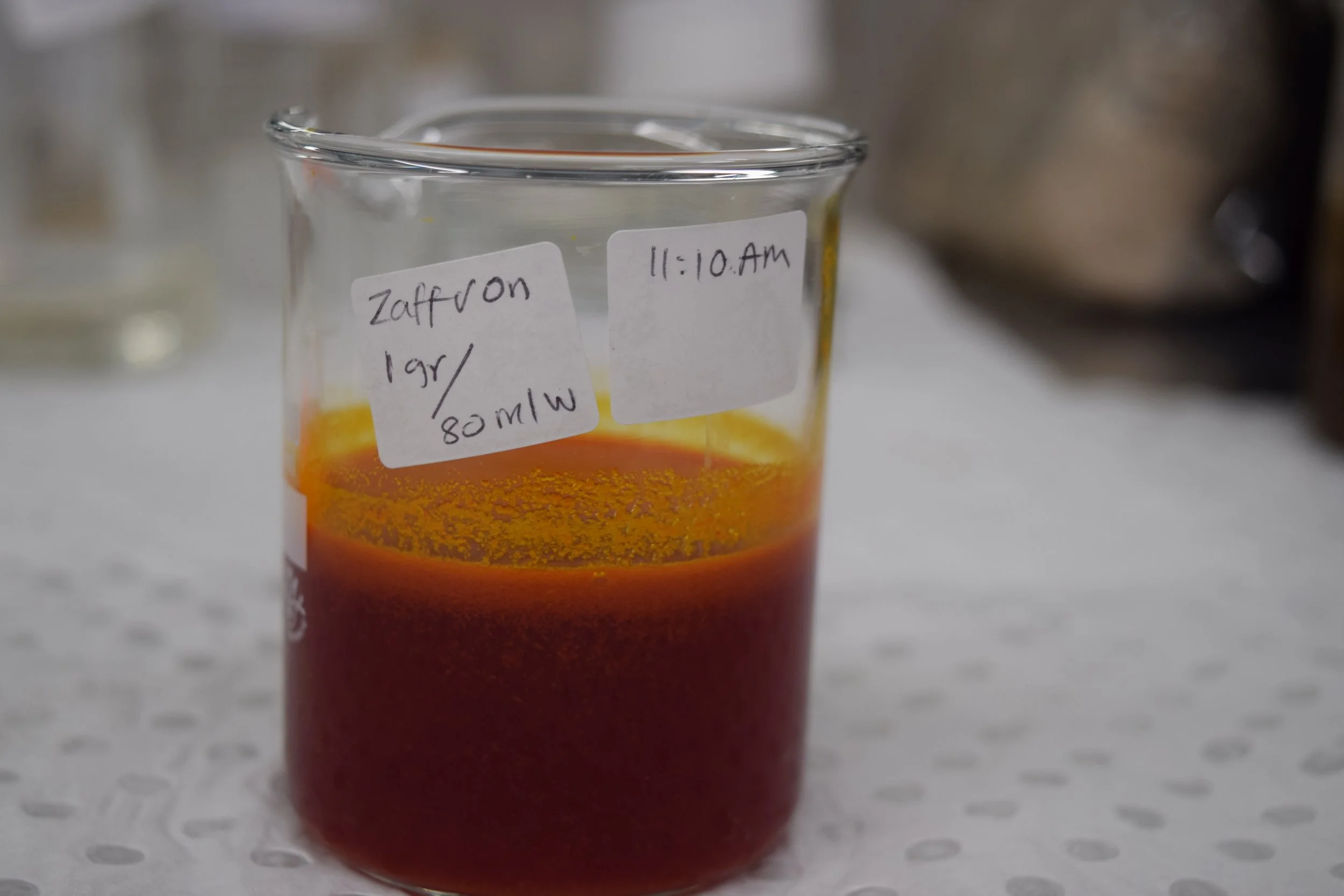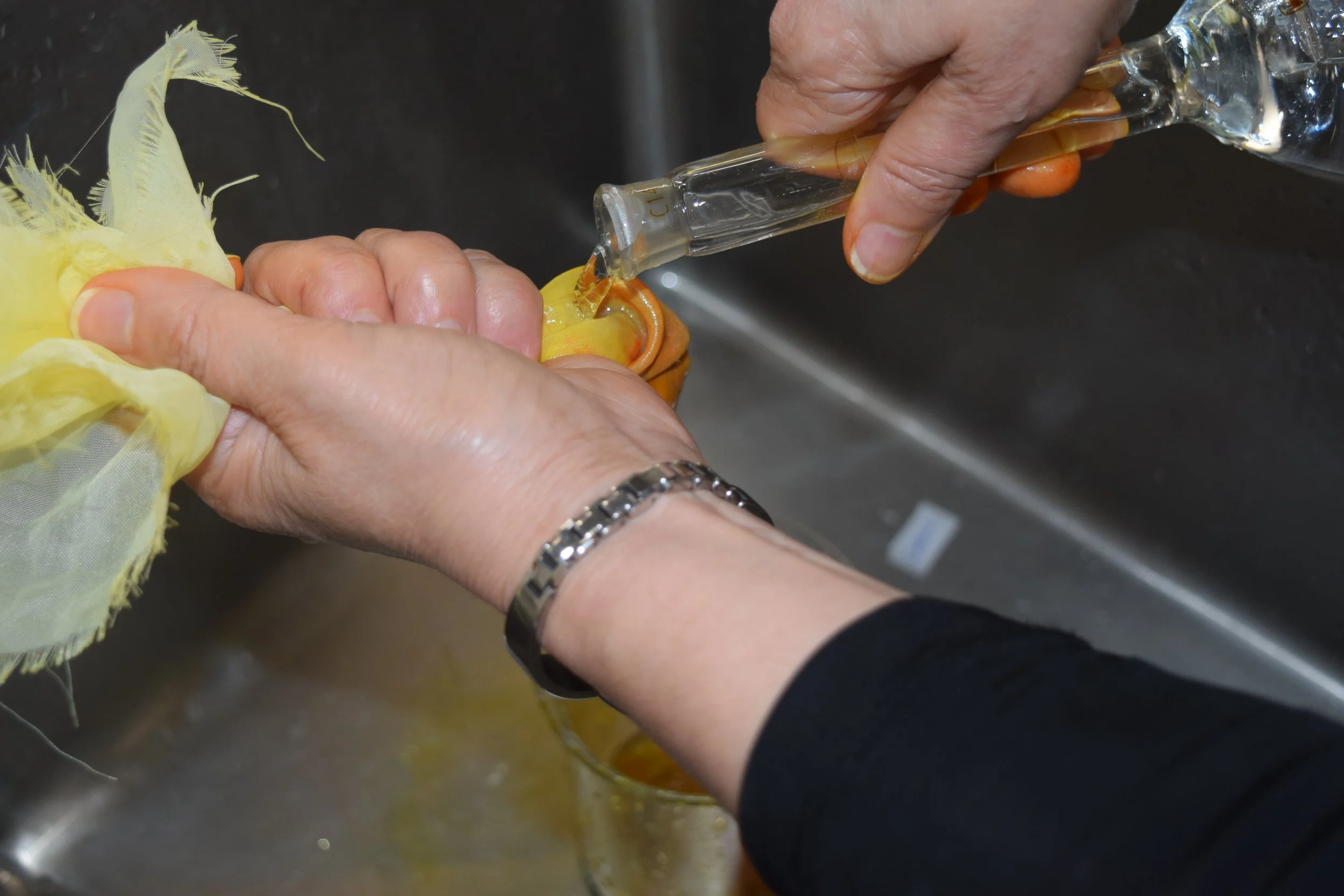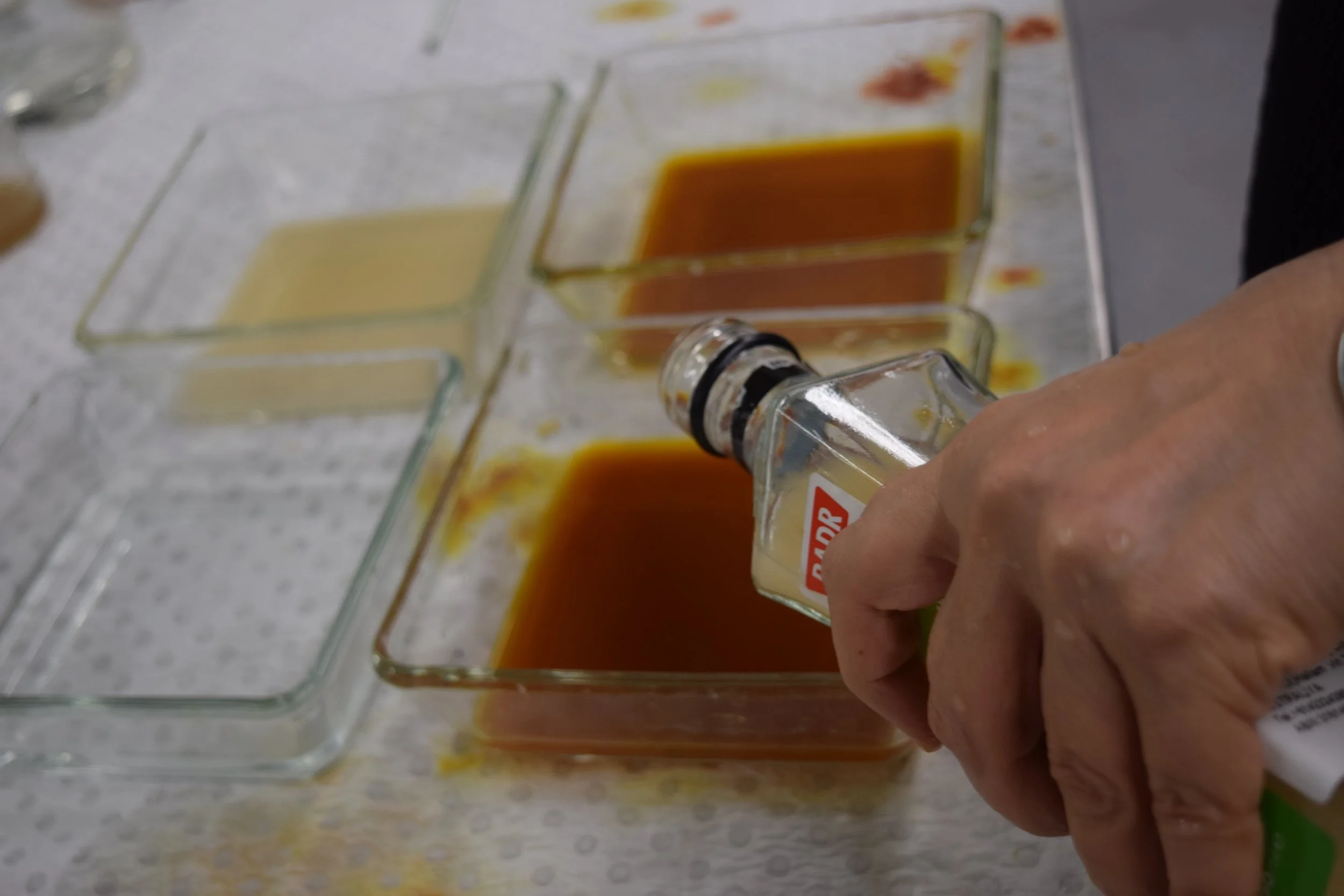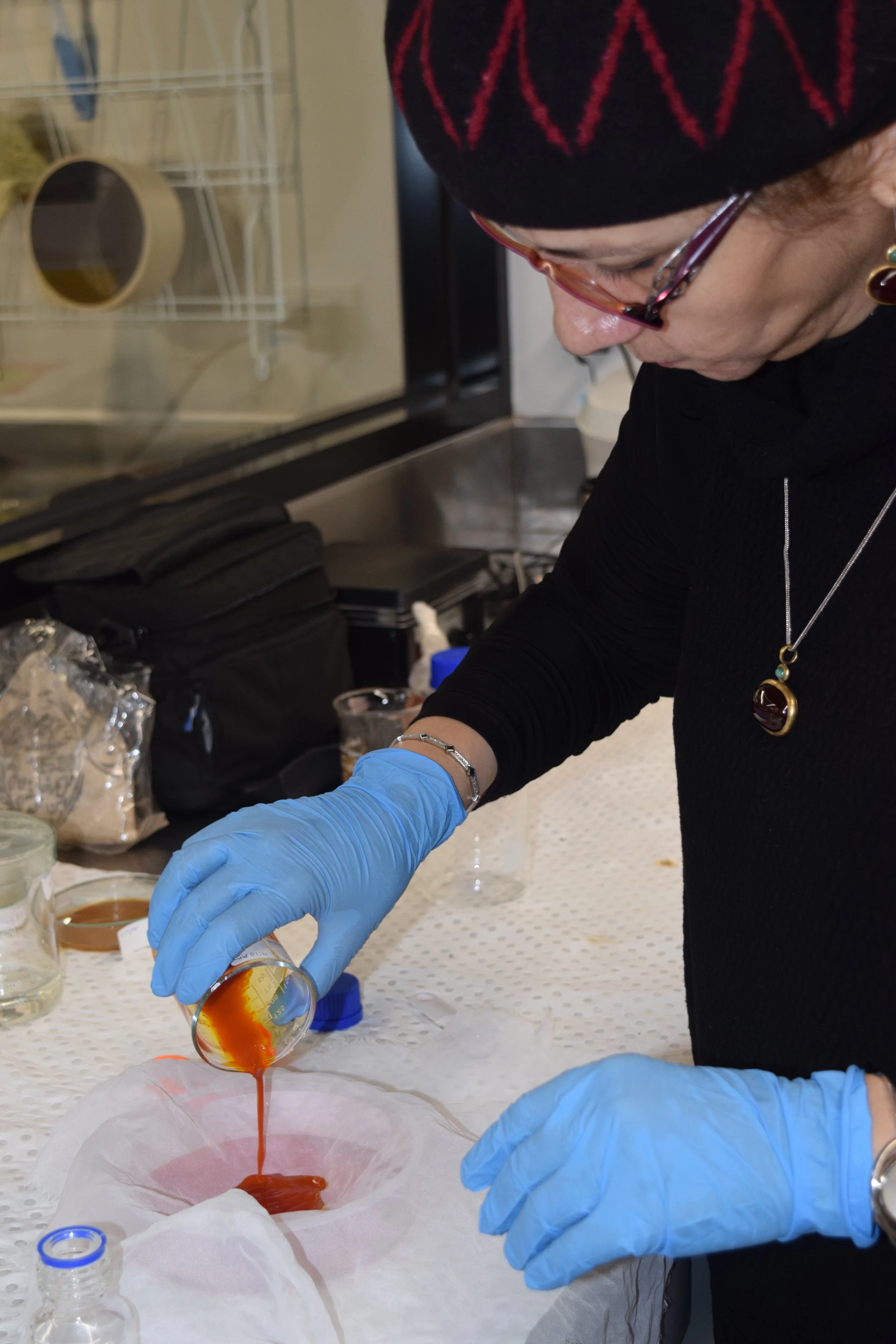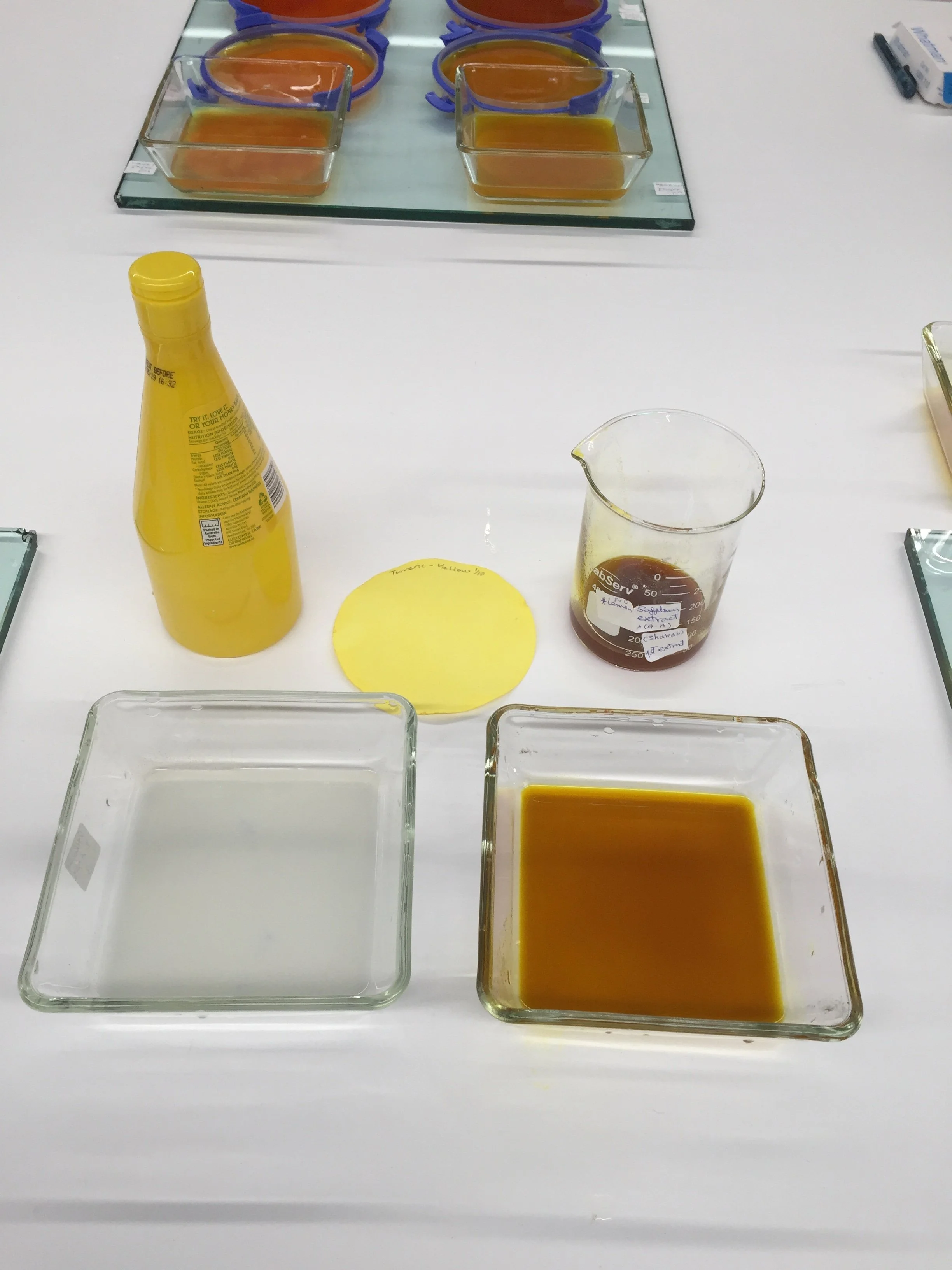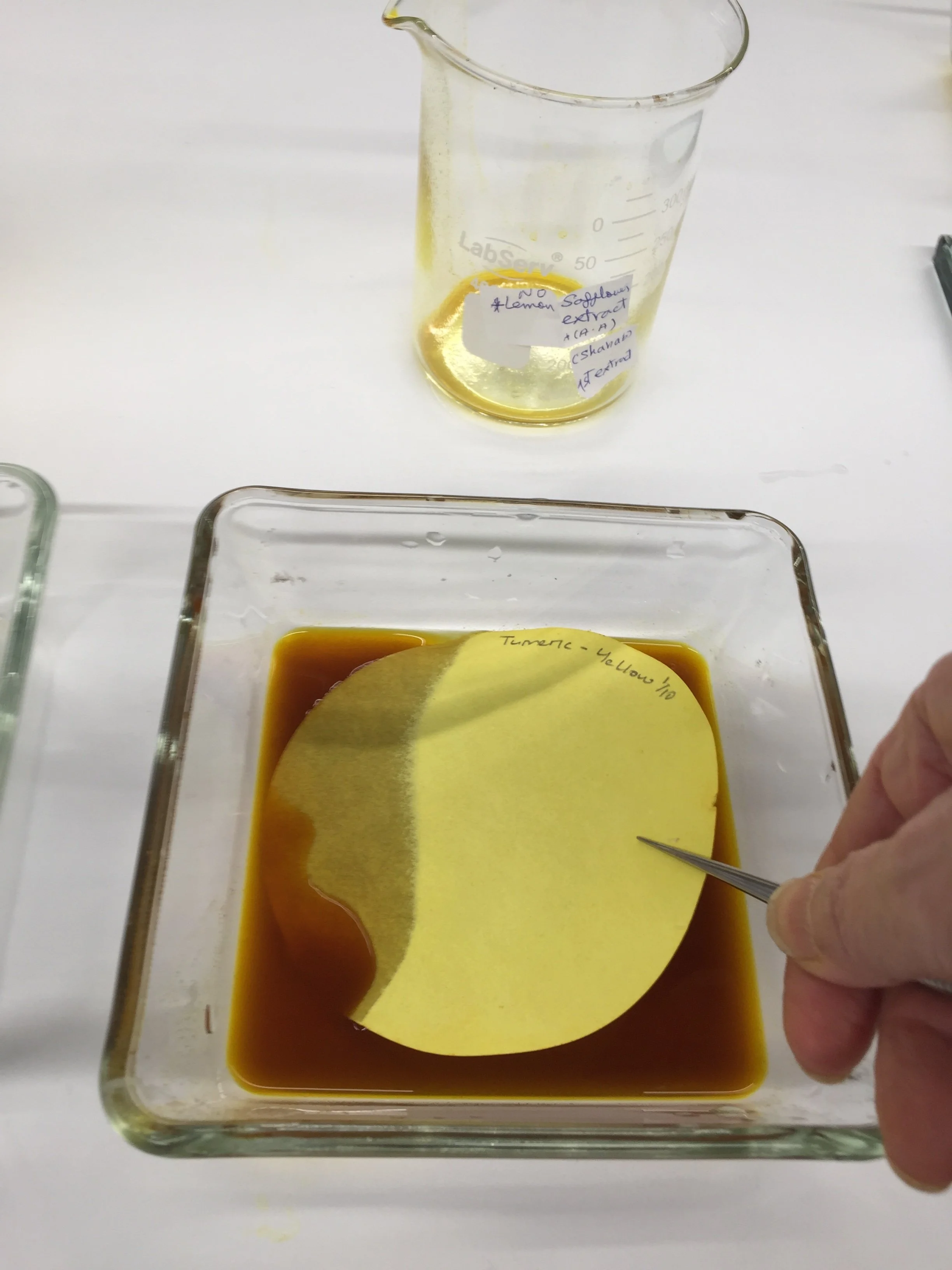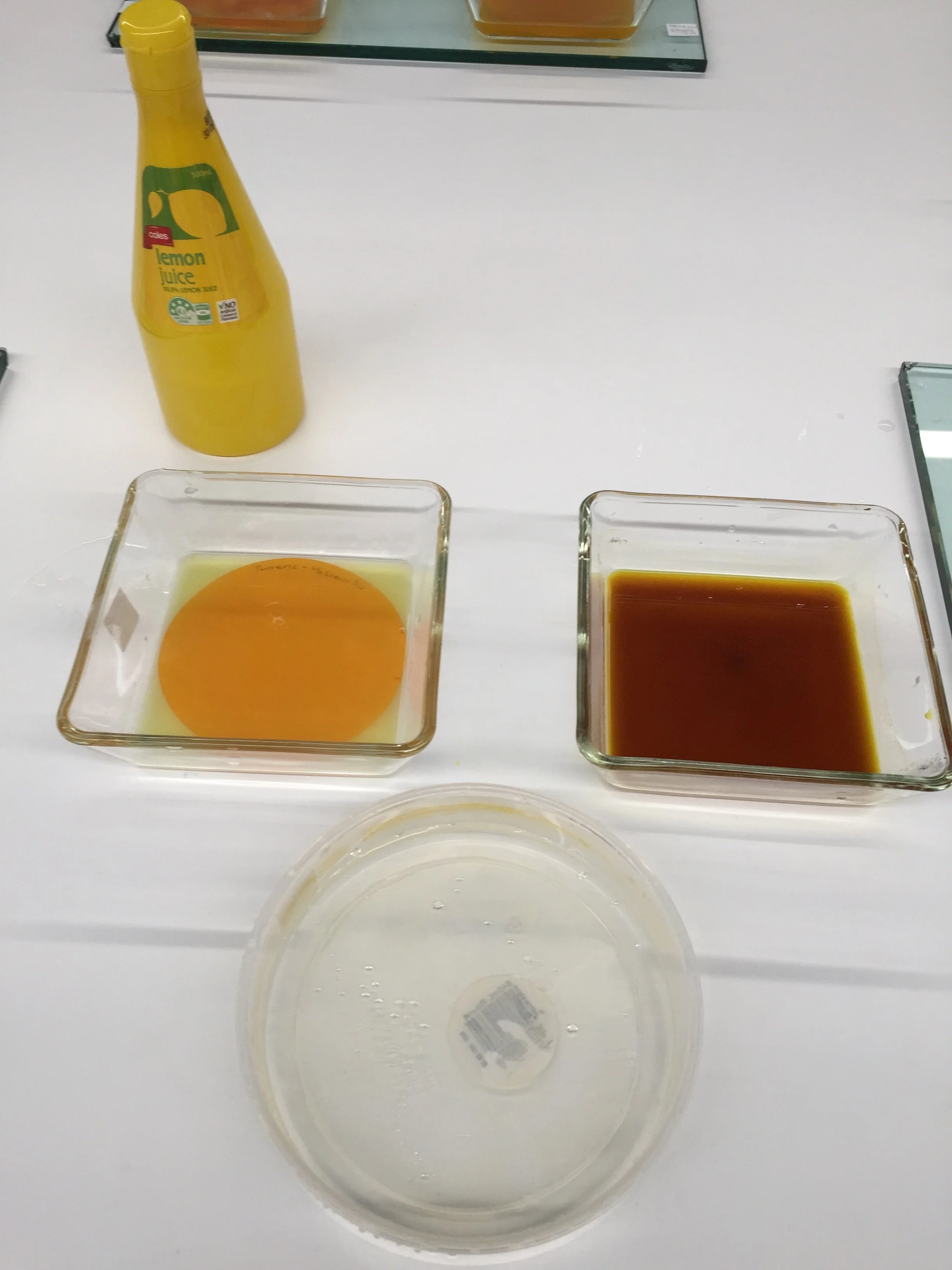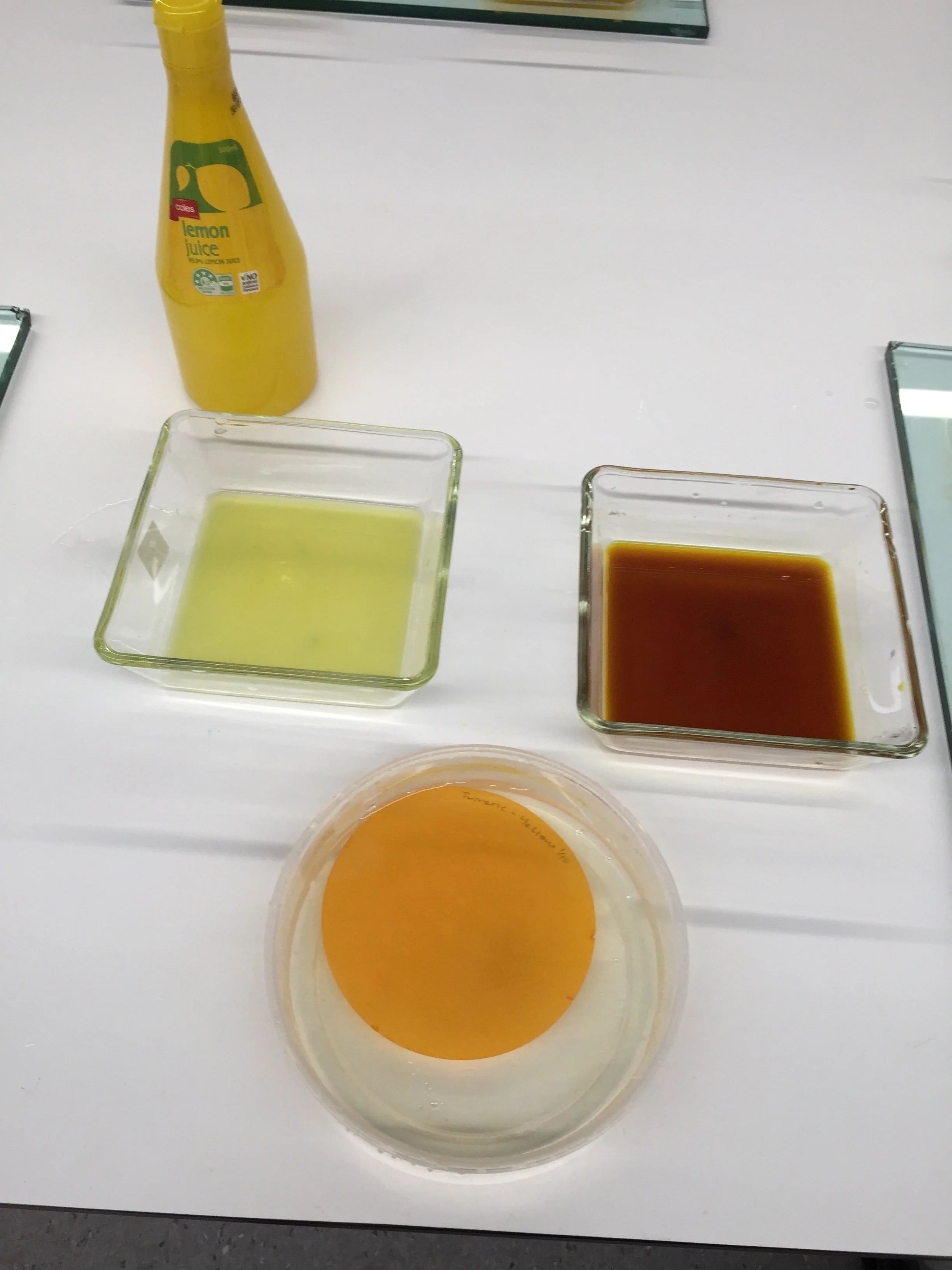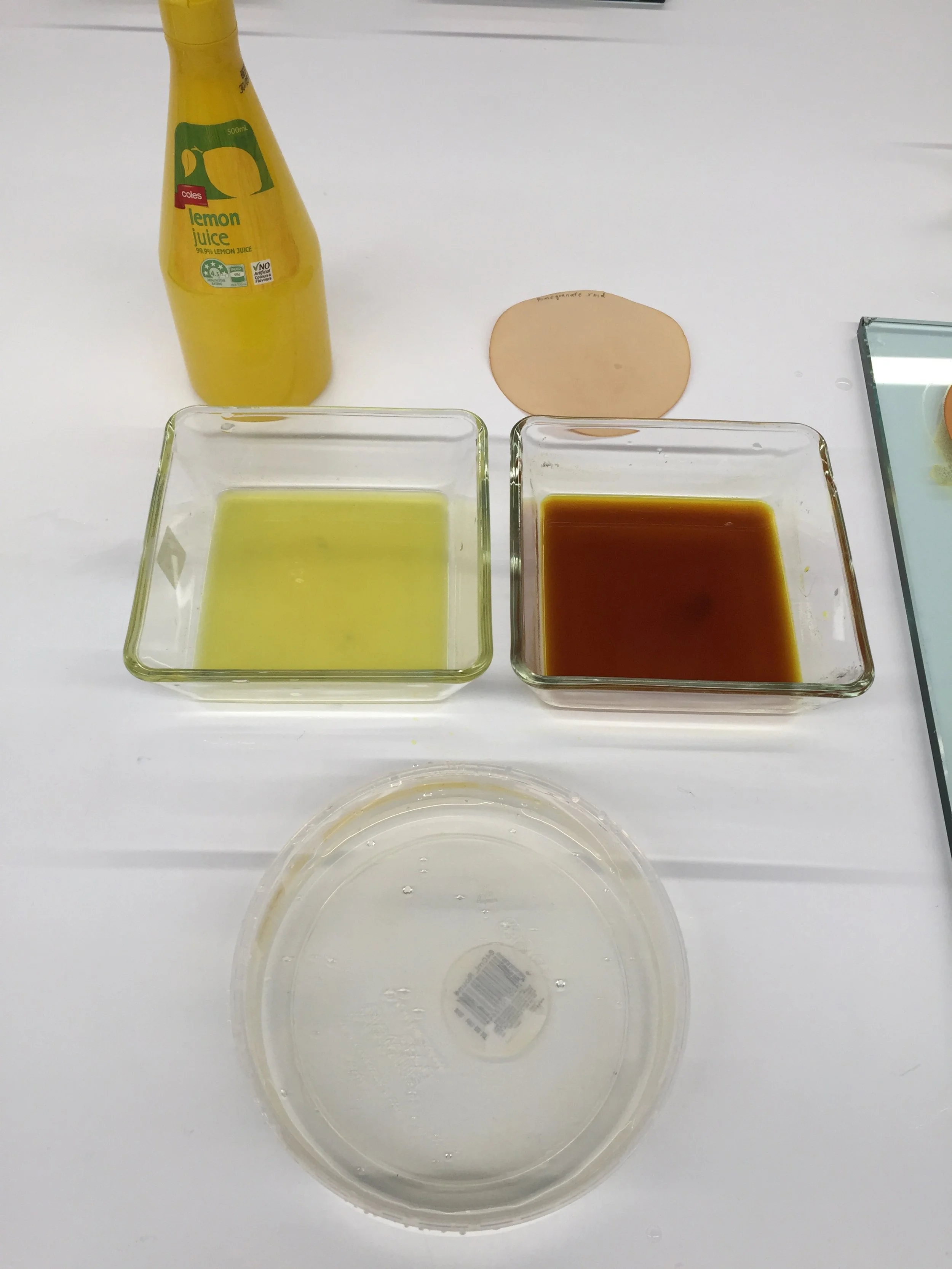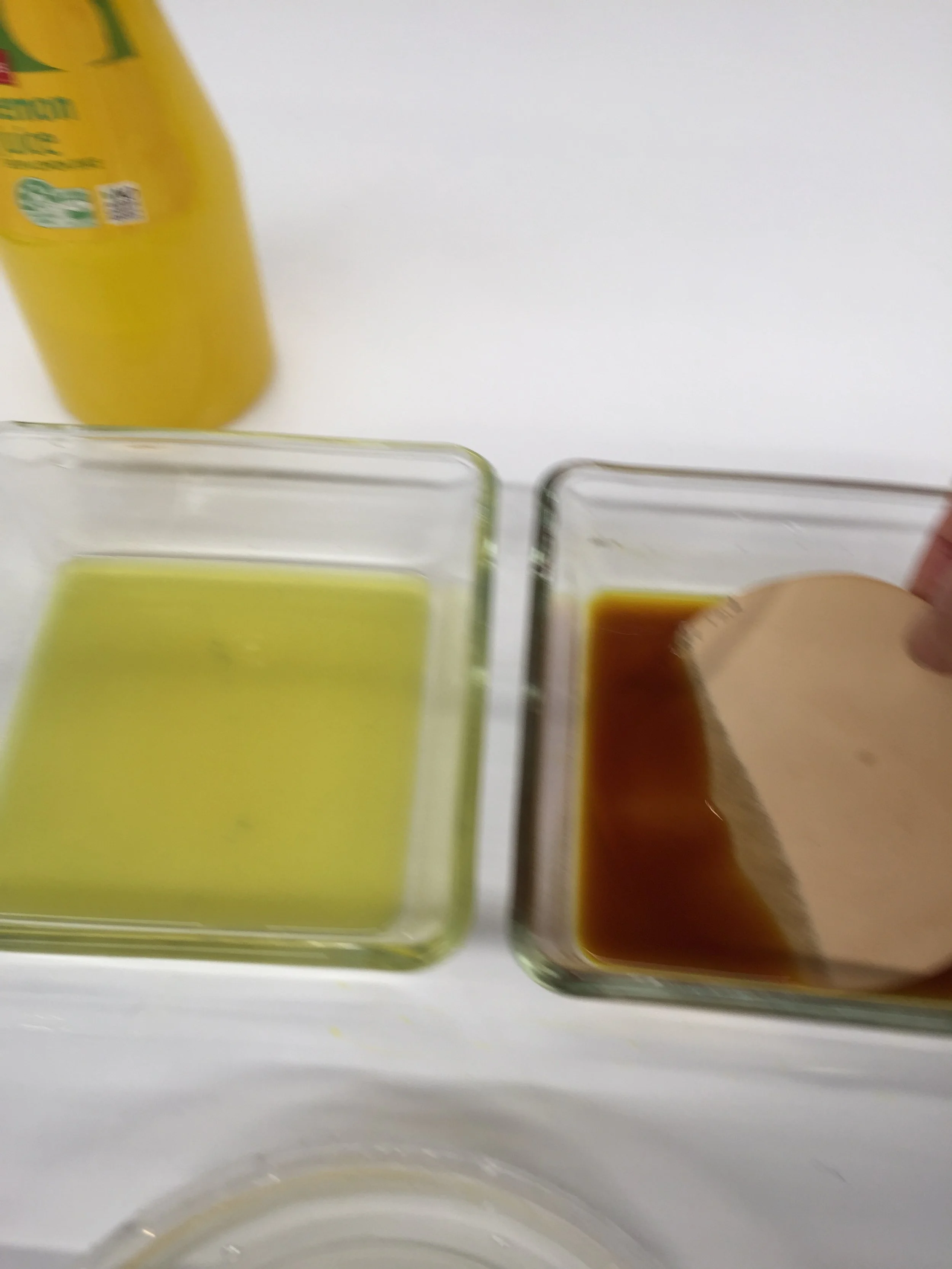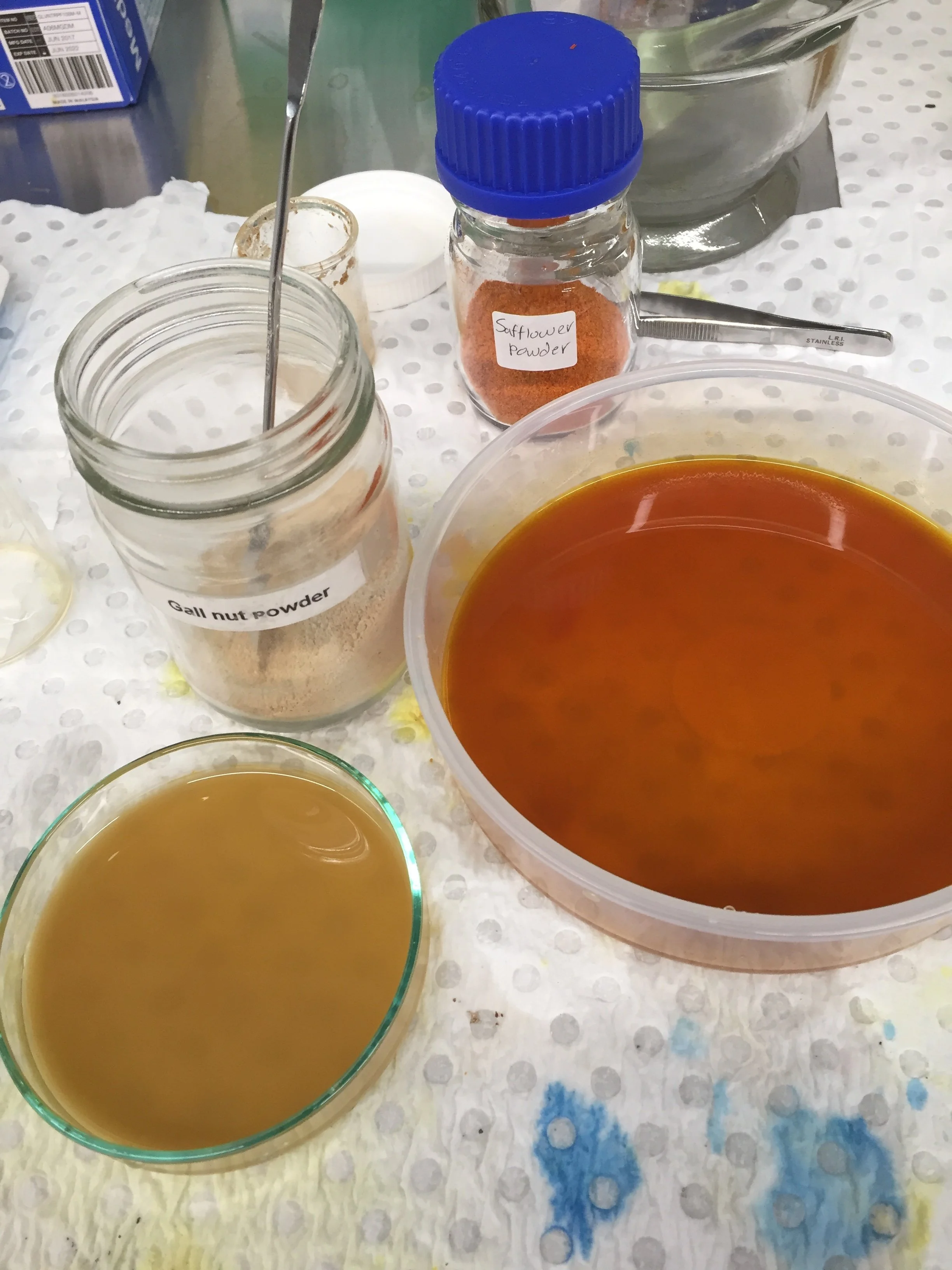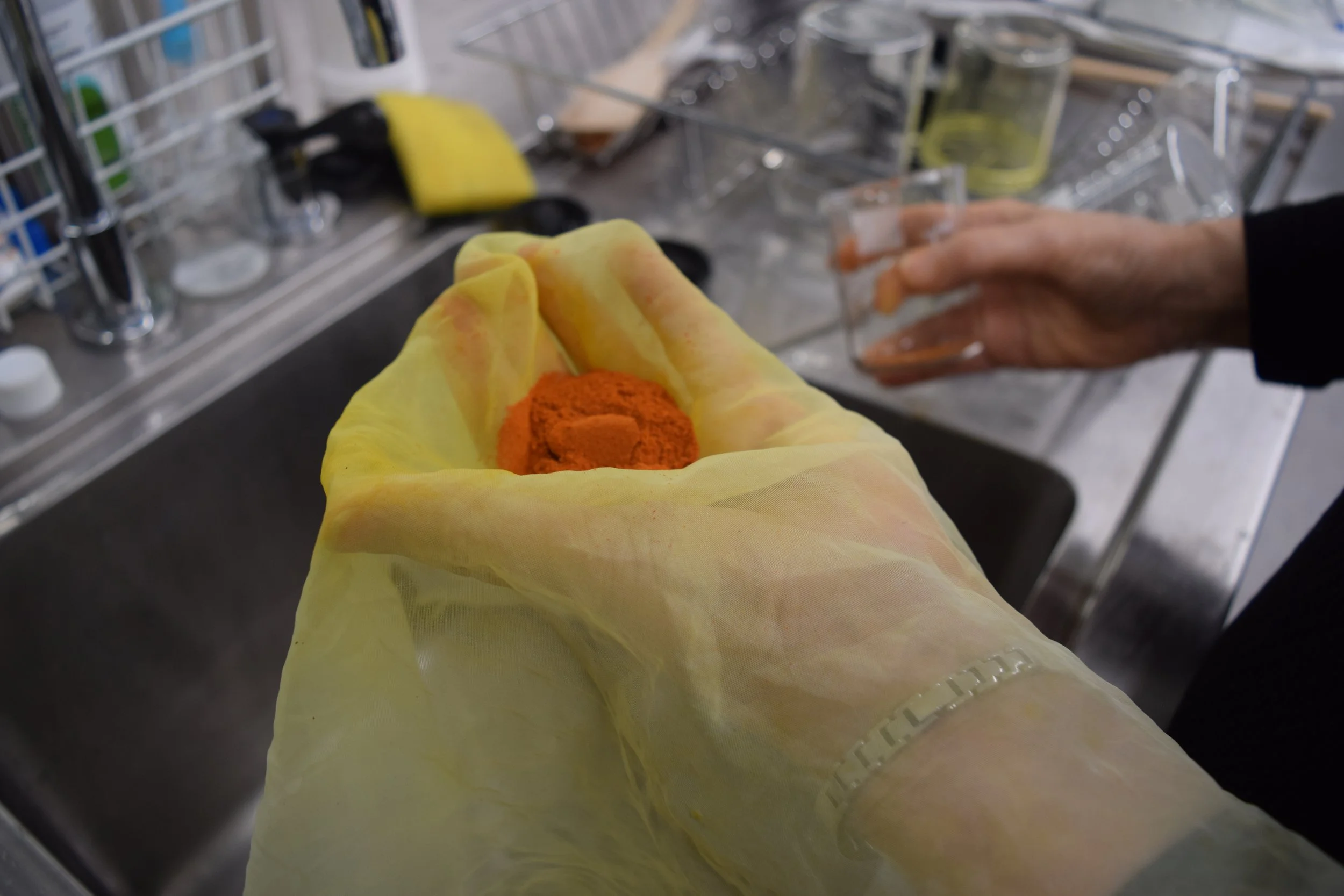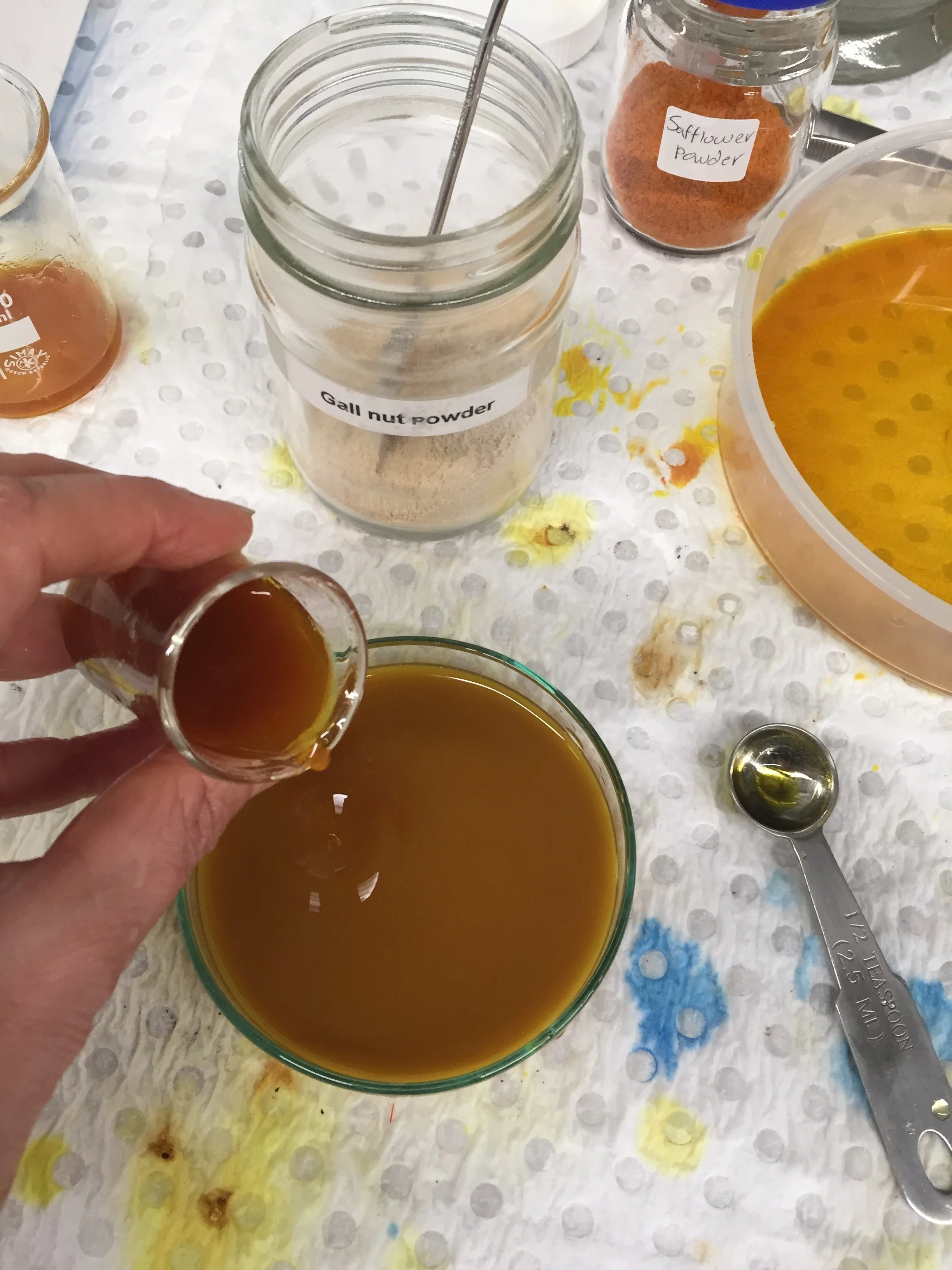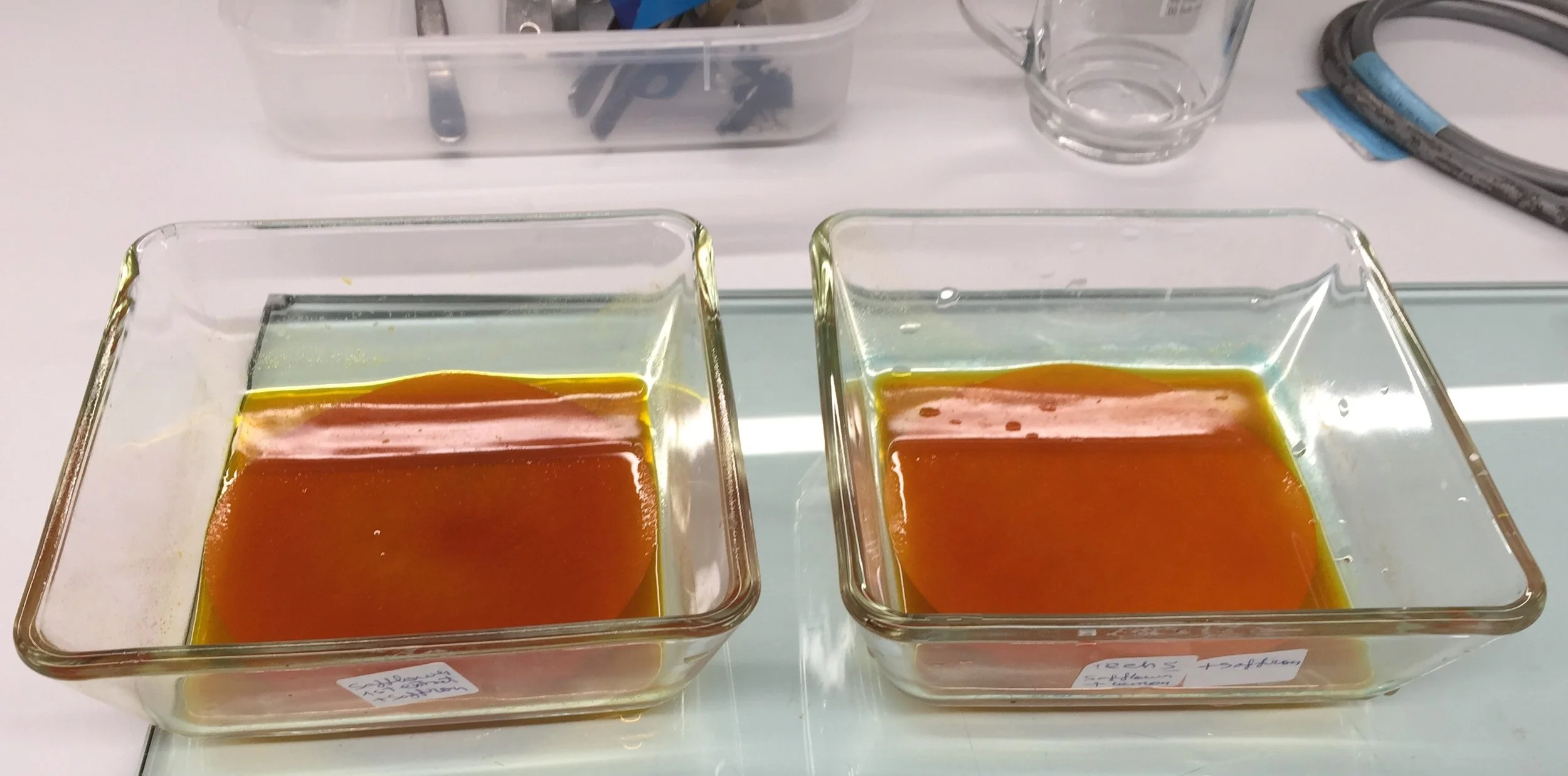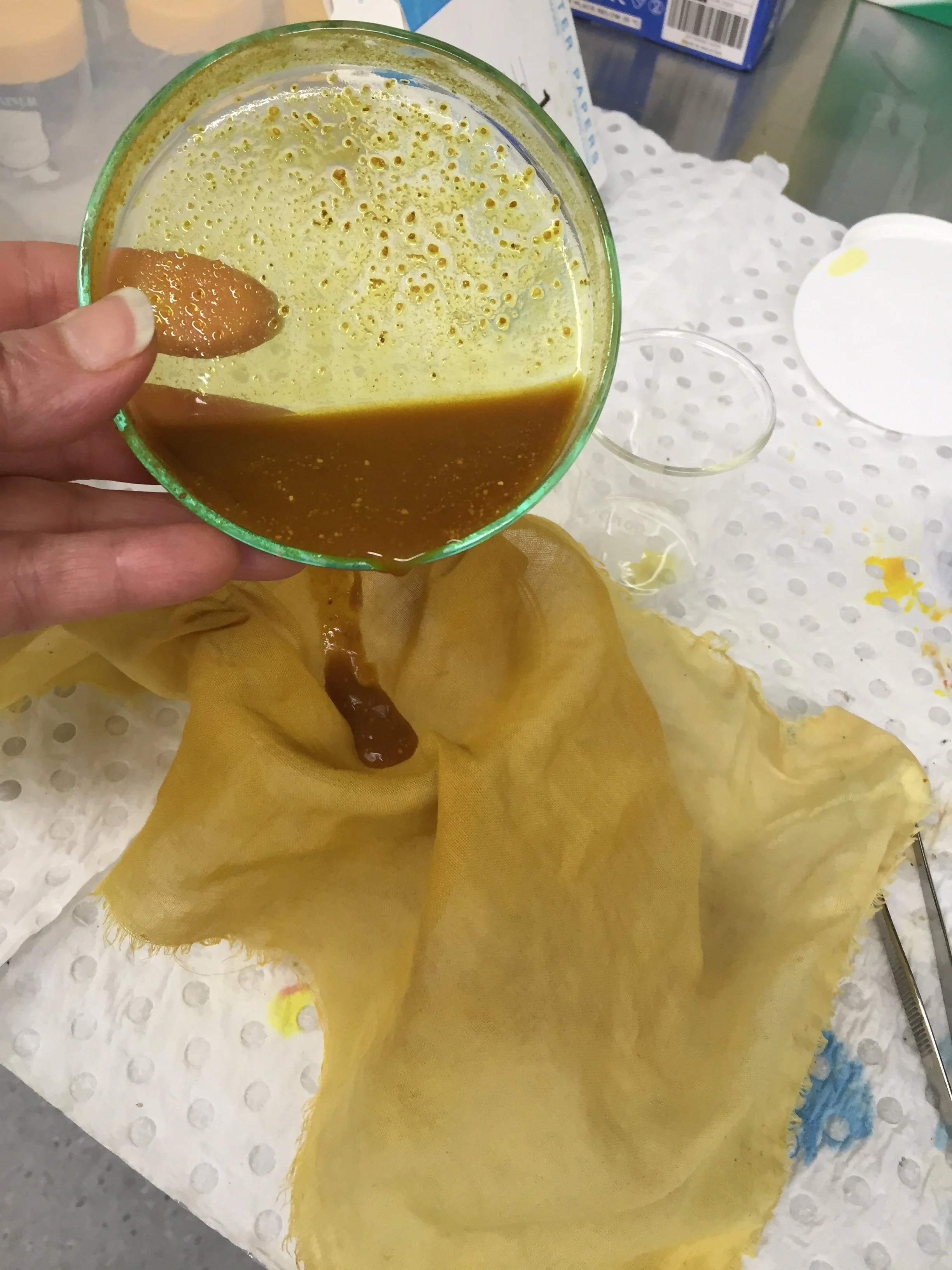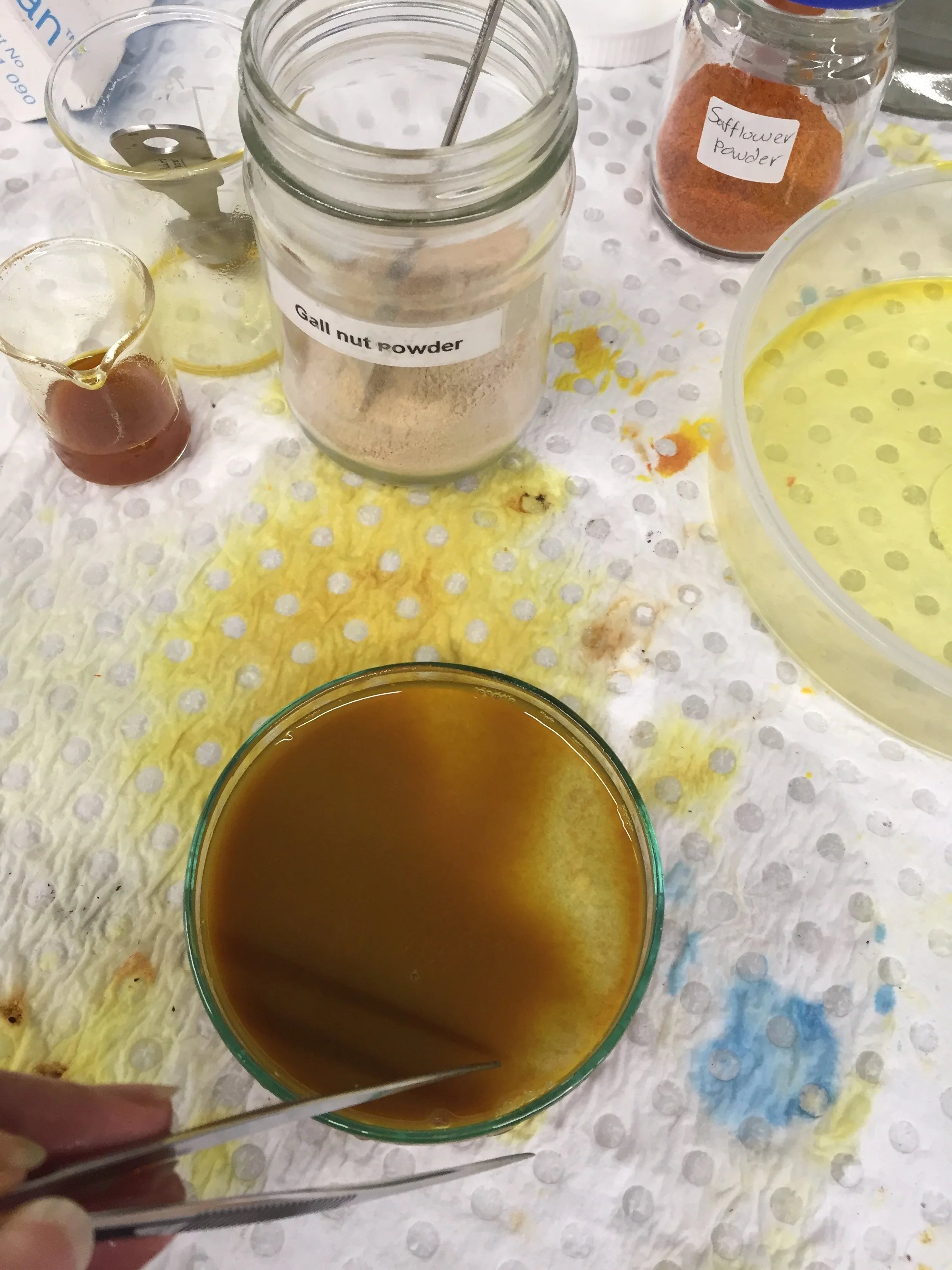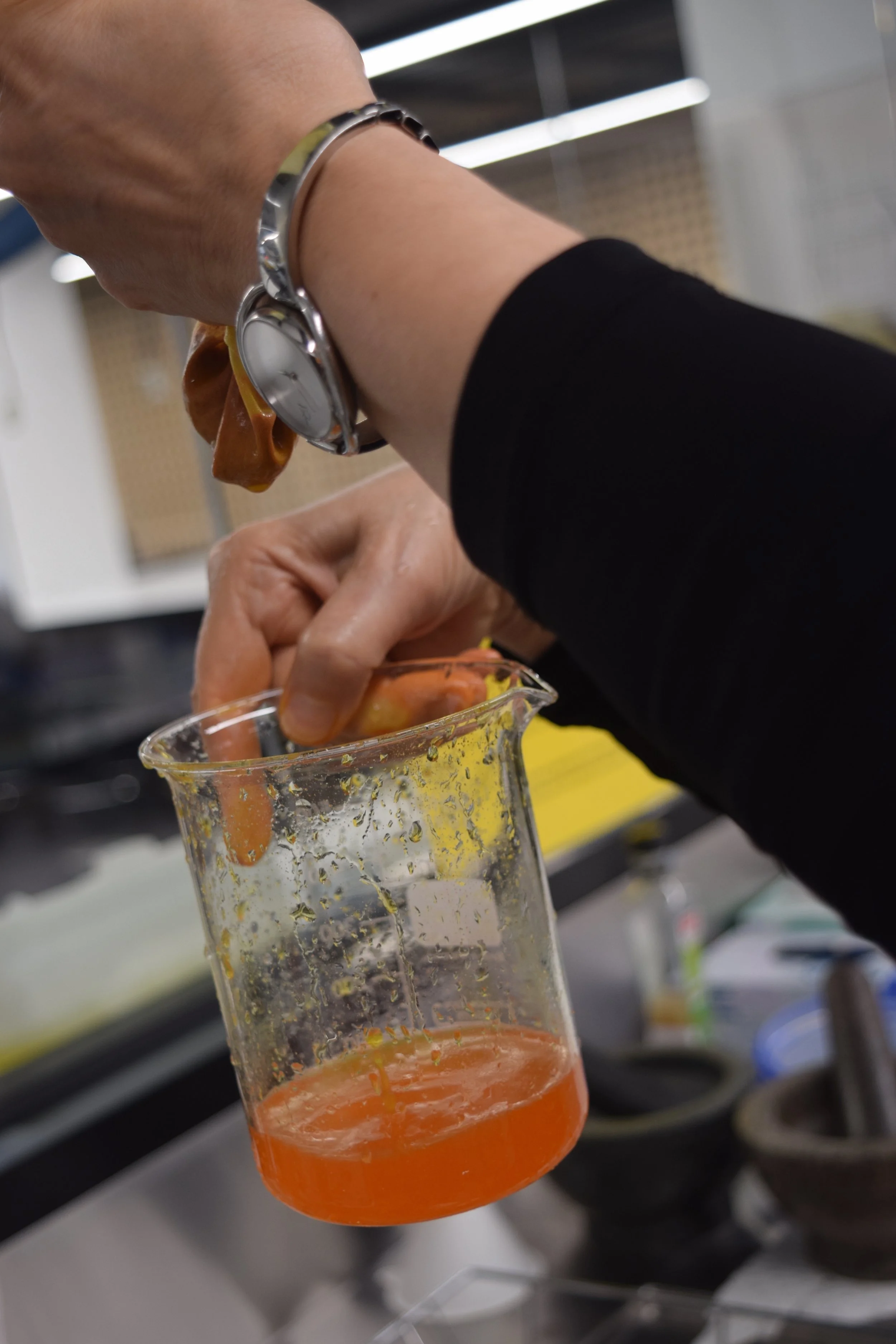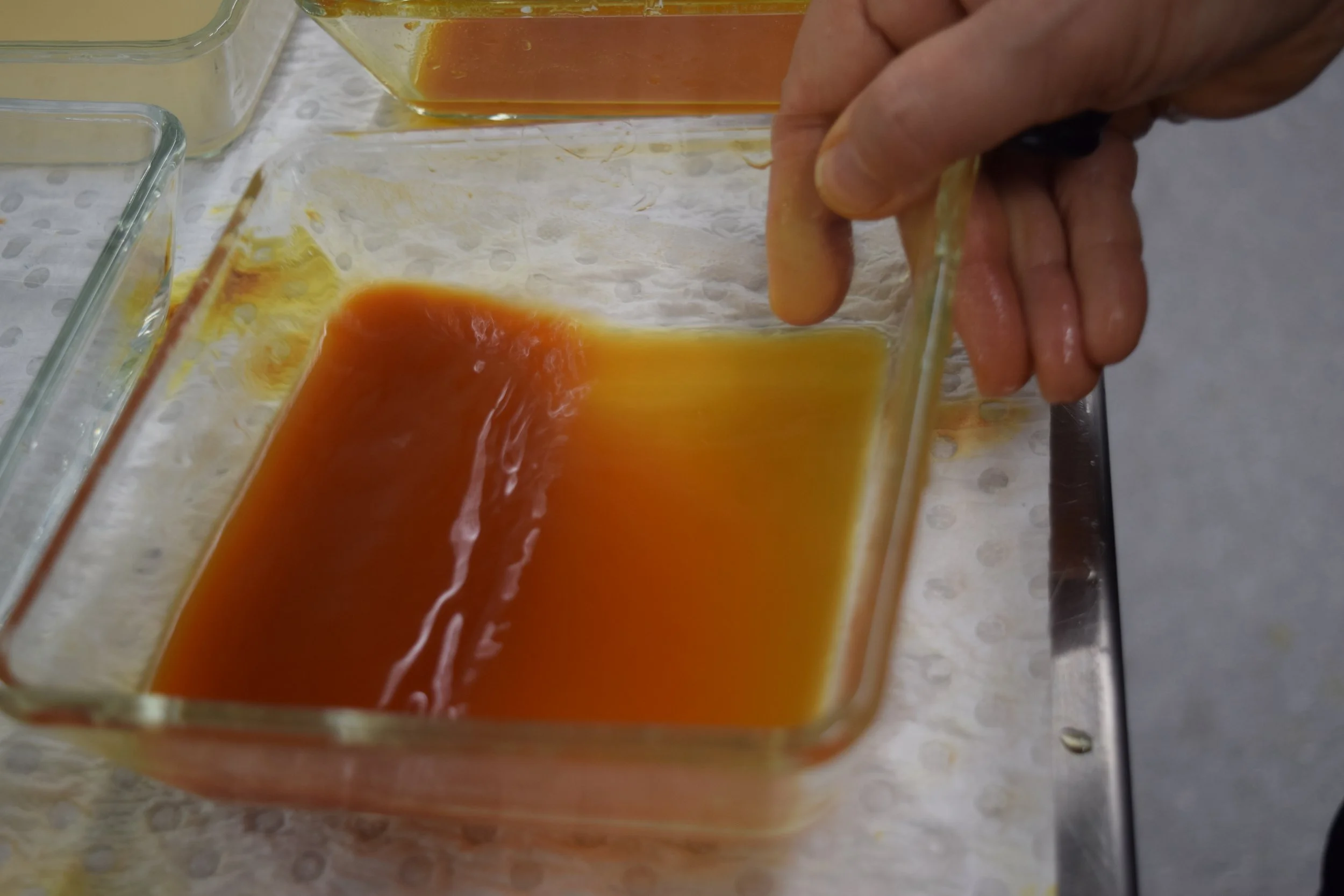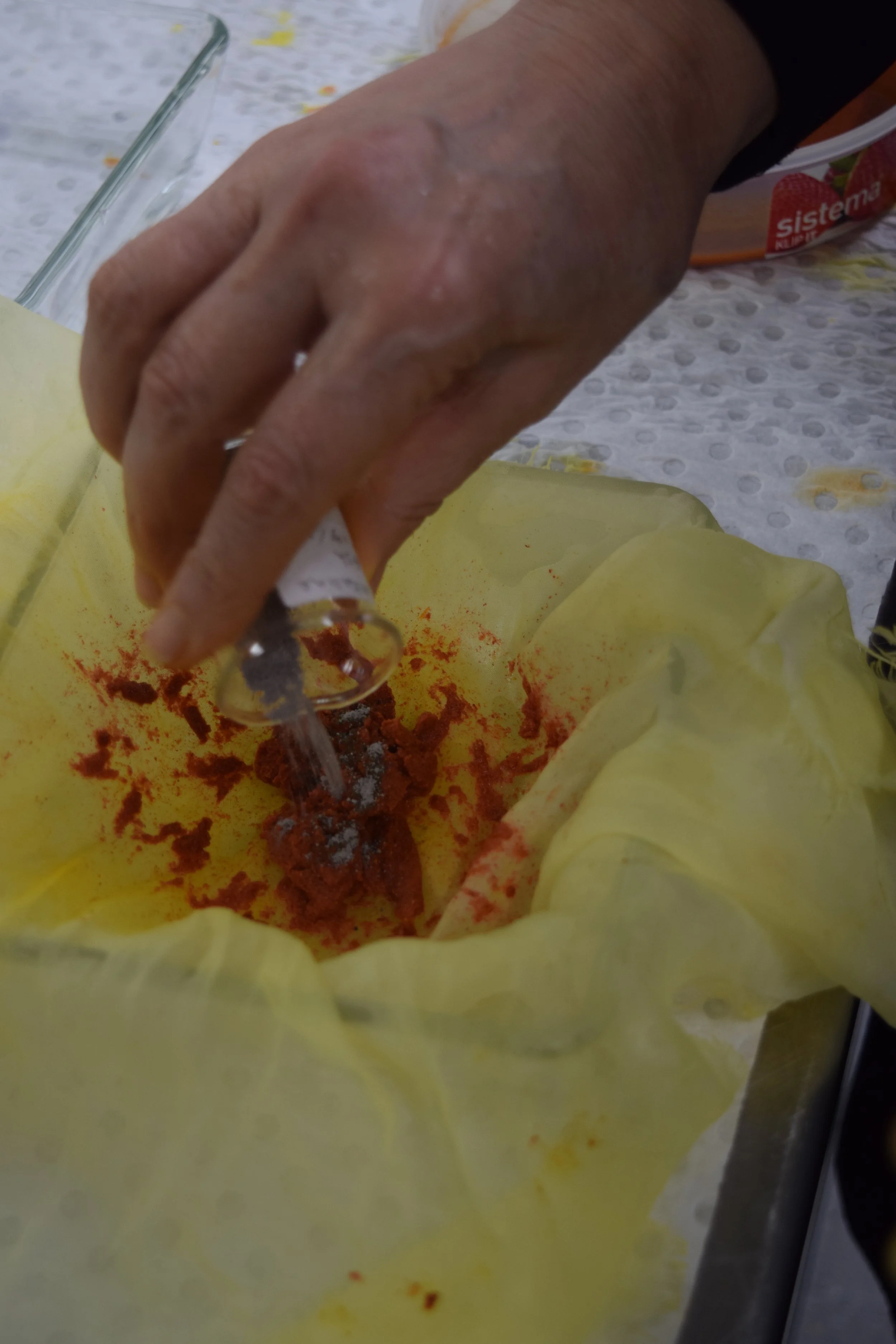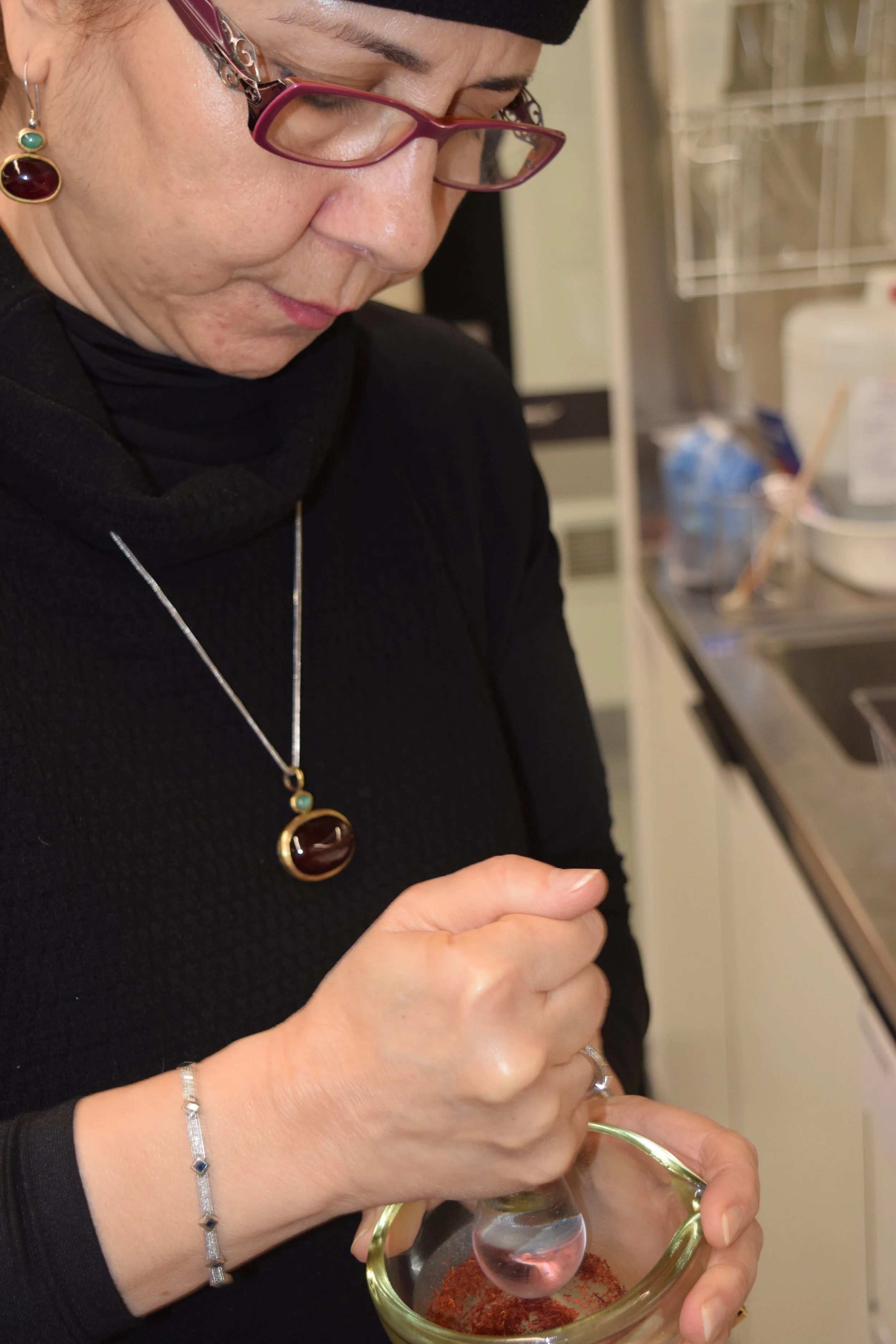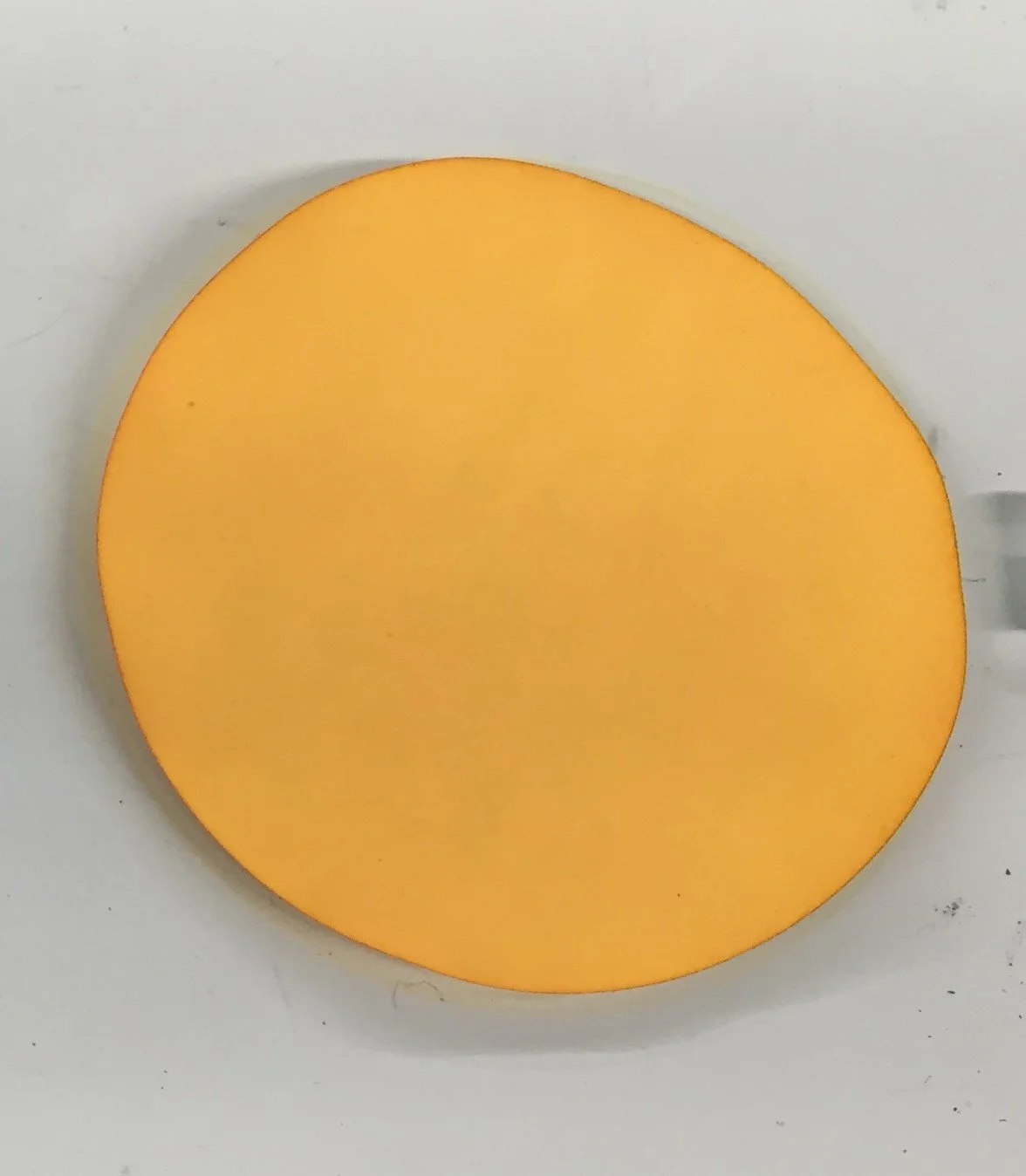ORANGE (NĀRENJĪ)
First Technique:
The first technique using red safflower and saffron is described in number of sources which mostly advised two methods, single bath, and double bath.
The only source that has limited this recipe to the first method, advising only single bath is Resāleh Dar Bayān-e Ṭarīqeh-ye Sāḵtan-e Morakkab va Kāğaḏ-e Alvān (16th century) and is as follows:
رنگ نارنج- قدری زعفران و شاهابِ گلِ مُعَصْفَر باهم بیامیزند نارنجی شود
To obtain orange color, mix some saffron and red safflower extract (šahāb) together.
In Resaleh-ye Joharrieh (837 AH/1433 A.D.) very briefly describe both methods:
رنگ نارنجی، قدری زعفران و شاهاب گل معصفر با هم بیامیزند، و کاغذ را آل کند، پس از آن زعفران بر آرد، بهتر بود
To obtain orange color, mix some saffron with red safflower extract (šahāb) together and dye the paper with it. It is better if the paper is first dyed in red (āl) and then in saffron.
In Resāleh Dar Bayān-e Kāğaḏ Morakkab va Ḥall-e Alvān (15th century) advise both methods in the same manner as the first source but with more details):
رنگ نارنجی- قدری زعفران و شاهابِ گلِ مُعَصْفَر با هم بیامیزد و کاغذ را به نَم در وی بگذارد، و بعد از آن در سایه خشک کند. و اگر اوٌل کاغذ را آل کند پس از آن به زعفران بر آرد بهتر خواهد بود
To achieve orange color, mix some saffron with red safflower extract (šahāb), and immerse the paper in the mixture. Subsequently, remove it and let it dry in the shade. For better results, it is advisable to first dye the paper in red (āl) and then apply saffron.
Ali Seyrafi in Golzār-e Ṣafā (950 A.H./1543 A.D.) describe both single and double bath in beautiful poetry form and add the duration the paper should be kept in the dye:
زعفران آب مُعَصْفَر ضم ساز كاغذ آنگاه در آن آب انداز
نيمهٔ روزش در رنگ بمان خشك در سايه بمانش از آن
كاغذ ار آل كني از اوٌل زعفران را پس از آن سازي حل
كاغذ آل به آن سازي رنگ باشد اين گونه خوش با نيرنگ
Dip the paper in that water, so neat,
Let it dry in the shade, a quiet retreat.
Saffron then, after the paper you greet,
A charm so delightful, colors to meet.
Saffron and safflower, in a blend, complete,
Half a day in color, a process sweet.
If with red first, the paper you treat,
Both hues unite, a palette discreet.
Hossein Aqili Rostamdari in Ḵaṭṭ va Morakkab (978 A.H./1571 A.D.) has described the same recipe as Golzār-e Ṣafā (950 A.H./1543 A.D.), however he has added the proportion of saffron and safflower as well advising equal ratio:
چون خواهد نارنجی نماید باید که آب زعفران و آب معصفر برابر، در هم ریزد و بعد از آن هر چه باشد نیم روز در آن نهد و بعد از آن بیرون آورد و در سایه خشک کند. نوع دیگر آن که اول چیزی را آل کند بعد از آن بیرون بیاورد و زعفران به آن حل کند
If an orange hue is desired, mix saffron and red safflower extract in equal proportions. Submerge the paper in this mixture for half a day, then take it out and let it dry in the shade. Another method is to first dye the paper in red (āl) dye, then take it out and dip in saffron dye.
Another recipe that is interesting to note is Soltān Aḥmad Majnun Rafīqī Heravī in Savād al-ḵaṭ (1523 A.D.), instead of red paper (āl) he writes that to obtain orange, dip rose pink (gol-gun) paper in saffron dye:
بدان که گلگون را اگر به زعفران زنند نارنجی شود
Know that if pink rose (gol-gun) paper is dipped in saffron dye, it will turn orange.
In Resāleh Dar Maʿrefat-e Kāğaḏ-e Alvān (19th century) advising the second method of double bath, but in different manner. The recipe advises to dye paper first in the mixture of saffron and red safflower extract and then again dip it for second bath in red safflower extract. Moreover, in this recipe it is advised that yellow paper also can be dipped in saffron dye bath however there is no mention of what kind of yellow paper to be used whether a yellow paper made by turmeric or pomegranate bark that we see in the next recipe:
قدری زعفران و آب گل معصفر با هم بیامیزد، اول کاغذ رنگ کند، آنگاه شاهاب نهد یا کاغذ زرد را در آب زعفران نهد، مجموع پسندیده است
First, mix saffron and red safflower extract (šahāb) together. Dye the paper with this mixture. Then, either immerse the same paper in the first extract of red safflower (šahāb) or put yellow paper in saffron dye. Both methods are acceptable.
Second and Third Techniques:
The second technique dipping yellow turmeric paper and third technique dipping the paper dyed with pomegranate bark (granata punic, pust-eanar or naspal) in red Safflower extract, are both advised in the sources Resāleh-ye Ḵošnevīsī (1120 A.H./1708 A.D.) and Resāleh Dar Bayān-e Rang Kardan-e Kāğaḏ (19th century).
کاغذ زرد خواه به زردچوبه رنگ کرده باشد و خواه به ناسپال، در شهاب گل بخوابند، و از آنجا به آب لیمو، و بعد از آن به آب صاف شسته در سایه خشک نماید، نارنجی بر خواهد آمد
To achieve an orange hue, use yellow paper dyed with turmeric (zard-chubeh) or pomegranate (naspal) bark. Submerge the paper in the first extract of red safflower (šahāb), then immerse it in lemon juice. Rinse it with water and let it dry in the shade.
Fourth Technque:
The fourth technique is mentioned in Majmu’at al-sanaye (1005 A.H. /1596 A.D) and advises to firstly dip lemon yellow paper in alum, (allow to dry) and then dip in red safflower:
رنگ نارنجی کاغذ را بر آن صنعت که نموده شد بآب شب یمانی بردارند و در معصفر درآرند
To achieve orange color, wet the paper with alum solution.Then dip the paper in red safflower dye.
1st technique
2nd technique
3rd technique
4th technique
Different shades of orange
Experiment:
First Technique: For a single dye bath, start by preparing a mixture of red safflower extract and saffron dye in the same ratio. Pour the dye into a glass container, dip the paper in it for half a day. The ratio of the mixture of red safflower and saffron dye, as well as the duration of the dye bath, can be varied depending on the desired shade of orange color. For a double dye bath, first, dye a paper in red safflower extract. Then take it out and dip it in saffron dye until you achieve the desired orange shade of color. After the dye bath, take out the paper and let it dry in the shade.
Second & Third Technique: Begin by making dyes from turmeric and pomegranate bark extract. Dye the paper with them and let them dry. Bring three glass containers and pour red safflower dye, lemon juice, and plain water separately. To achieve an orange shade on colored papers, first dip the dyed papers in red safflower extract using the double dye bath method. Second, dip it in lemon juice, and third in water. Afterwards, take it out and let it dry in the shade.
Fourth Technique: First, make an alum solution and wet the paper with it, then let it dry. To achieve an orange color, dip the paper in red safflower dye. Take the paper out and let it dry.
